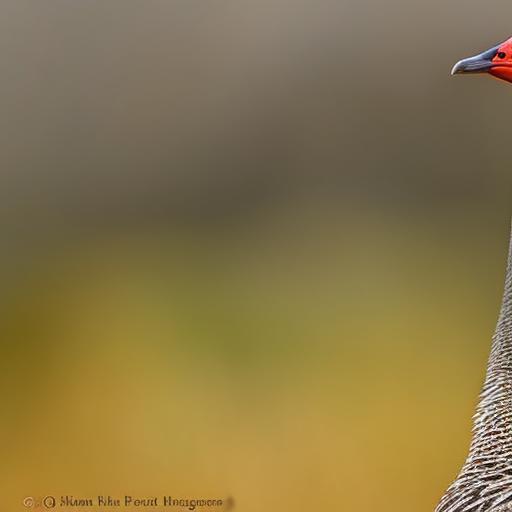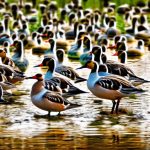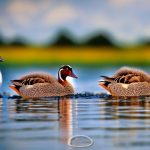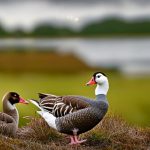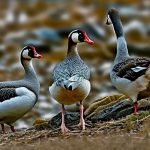Geese have a long and fascinating history that dates back thousands of years. They were first domesticated in ancient Egypt and Mesopotamia, where they were valued for their meat, eggs, and feathers. Geese were also used as guard animals, as their loud honking and aggressive nature made them excellent watchdogs. Over time, geese spread to other parts of the world, including Europe and Asia.
In agriculture and livestock farming, geese play an important role. They are efficient grazers and can help control weeds and pests in fields. Geese also produce high-quality meat and eggs, making them a valuable resource for farmers. Additionally, their feathers are used in various industries, such as bedding and clothing.
Key Takeaways
- Geese have been domesticated for over 4,000 years and were originally used for their meat, eggs, and feathers.
- Geese have a unique anatomy, including a long neck and webbed feet, that allows them to swim and fly long distances.
- Popular breeds of domesticated geese include the Toulouse, Embden, and Chinese breeds.
- There are over 30 species of wild geese, including the Canada goose and the snow goose.
- Geese play an important role in agriculture and livestock farming, as they can help control pests and fertilize crops.
- Breeding and rearing geese requires proper housing, feeding, and care, and can be a profitable business venture.
- Geese require a balanced diet of grains, greens, and protein, and need access to clean water and shelter.
- Geese are important for ecological conservation, as they help maintain wetland habitats and can serve as indicators of environmental health.
- Geese have been featured in art and literature for centuries, often symbolizing loyalty, courage, and fidelity.
- Geese face threats from habitat loss, hunting, and climate change, but conservation efforts are underway to protect their populations.
Understanding the Anatomy and Characteristics of Geese
Geese are large birds with long necks and webbed feet. They have a streamlined body shape that allows them to fly long distances. Their feathers are typically gray or white, although some breeds have unique color patterns. Geese have a strong beak that they use for grazing on grass and other vegetation.
In terms of behavior, geese are known for their strong social bonds. They form tight-knit family groups and communicate with each other through honking sounds. Geese are also highly territorial and will defend their nesting sites aggressively. They are intelligent birds that can recognize familiar faces and remember locations.
Popular Breeds of Domesticated Geese
There are several popular breeds of domesticated geese, each with its own unique characteristics and uses. One such breed is the Toulouse goose, which is known for its large size and excellent meat quality. Toulouse geese have gray feathers and a calm temperament, making them easy to handle.
Another popular breed is the Embden goose, which is prized for its white feathers and high egg production. Embden geese are also known for their friendly and docile nature, making them popular pets. They are often used in crossbreeding programs to improve the meat and egg production of other breeds.
The Chinese goose is another well-known breed, characterized by its distinctive knob on the top of its beak. Chinese geese are excellent foragers and are often used for weed control in vineyards and orchards. They are also good egg layers and have a calm temperament.
The Different Types of Wild Geese
There are several different types of wild geese, each adapted to different habitats and climates. One of the most well-known species is the Canada goose, which is native to North America. Canada geese are known for their distinctive honking call and V-shaped flight formation. They migrate long distances during the winter months, often traveling in large flocks.
Another type of wild goose is the Greylag goose, which is native to Europe and Asia. Greylag geese have gray feathers and a pink beak. They are highly adaptable birds that can be found in a variety of habitats, including wetlands, grasslands, and agricultural fields.
The Snow goose is another species of wild goose that is known for its white plumage. Snow geese breed in the Arctic tundra and migrate south during the winter months. They often form large flocks that can number in the thousands.
The Role of Geese in Agriculture and Livestock Farming
Geese play a crucial role in agriculture and livestock farming. They are efficient grazers that can help control weeds and pests in fields. By grazing on grass and other vegetation, geese can reduce the need for chemical herbicides and pesticides.
In addition to their grazing abilities, geese also provide valuable resources for farmers. Their meat is lean and flavorful, making it a popular choice among consumers. Geese also lay large eggs that are rich in nutrients. Their feathers are used in various industries, such as bedding and clothing.
Breeding and Rearing Geese: Tips and Techniques
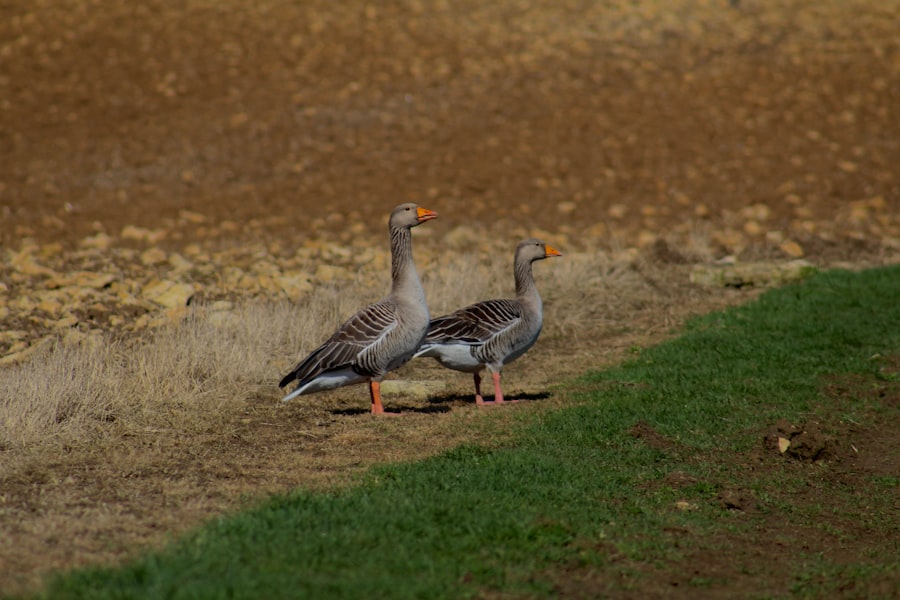
Breeding and rearing geese can be a rewarding experience, but it requires careful planning and attention to detail. When selecting breeding stock, it is important to choose birds that are healthy and have desirable traits. It is also important to provide a suitable nesting area for the geese, as they prefer to lay their eggs in a secluded spot.
Incubation and hatching are critical stages in the breeding process. Geese eggs typically take around 28-30 days to hatch. During this time, it is important to maintain the proper temperature and humidity levels in the incubator. Once the goslings hatch, they should be kept in a warm and secure brooder until they are old enough to be moved outside.
Nutritional Needs of Geese: Feeding and Care
Geese have specific nutritional requirements that must be met in order for them to thrive. They require a balanced diet that includes a mix of grains, greens, and protein sources. It is important to provide geese with access to fresh water at all times, as they need it for digestion and hydration.
Feeding geese can be done through free-range grazing or by providing them with a formulated feed. Free-range grazing allows geese to forage for their own food, which can help reduce feed costs. However, it is important to ensure that the grazing area is free from toxic plants and other hazards.
The Importance of Geese in Ecological Conservation
Geese play an important role in ecological conservation, particularly in wetland ecosystems. They help maintain the health of wetlands by grazing on vegetation and controlling the spread of invasive species. Geese also contribute to nutrient cycling by depositing their droppings, which provide valuable nutrients for plants and other organisms.
In addition to their ecological contributions, geese also serve as indicators of environmental health. Changes in goose populations can indicate shifts in habitat quality and the overall health of ecosystems. By monitoring goose populations, scientists can gain valuable insights into the state of the environment.
Geese in Art and Literature: Symbolism and Significance
Geese have long been a source of inspiration in art and literature. In many cultures, geese are seen as symbols of loyalty, courage, and vigilance. They are often depicted in paintings and sculptures as majestic creatures with a strong sense of community.
In literature, geese are often used as metaphors for various human qualities. They are portrayed as wise and noble creatures that possess a deep understanding of the natural world. Geese are also associated with migration and the idea of embarking on a journey.
Challenges Facing Geese: Threats and Conservation Efforts
Despite their importance, geese face several threats that put their populations at risk. Habitat loss is one of the biggest challenges facing geese, as wetlands are being drained and converted for agriculture and urban development. Pollution is another major threat, as it can contaminate water sources and disrupt the food chain.
Conservation efforts are underway to protect geese and their habitats. These efforts include the establishment of protected areas, such as national parks and wildlife refuges. Conservation organizations also work to raise awareness about the importance of geese and advocate for their protection.
In conclusion, geese have a rich history and play a vital role in agriculture, livestock farming, and ecological conservation. Understanding their anatomy, characteristics, and breeding requirements is essential for successful farming practices. By appreciating the significance of geese in art, literature, and culture, we can gain a deeper understanding of their importance in our world. However, it is crucial that we address the challenges facing geese and take action to protect them and their habitats for future generations.
If you’re interested in learning more about geese and their care, you might also find this article on Poultry Wizard helpful. It provides valuable information on large chicken coop ideas, which can be adapted for geese as well. Understanding the importance of a suitable living space is crucial for the well-being of all breeds of geese. Check out the article here: https://poultrywizard.com/keeping-chickens/large-chicken-coop-ideas/. Additionally, if you’re looking for chicken coop run plans that can be modified for geese, this article offers practical suggestions: https://poultrywizard.com/keeping-chickens/chicken-coop-run-plans/. Lastly, if you’re curious about what vegetables quails eat, it’s worth exploring this informative article: https://poultrywizard.com/keeping-quail/what-vegetables-do-quails-eat/.
FAQs
What are the different breeds of geese?
There are over 30 breeds of geese, including the African, Chinese, Embden, Toulouse, and Canada Goose.
What is the difference between domestic and wild geese?
Domestic geese have been bred for specific traits, such as meat or egg production, while wild geese have adapted to survive in their natural habitats.
What is the average lifespan of a goose?
Geese can live up to 20 years in captivity, but their lifespan in the wild is typically shorter due to predation and other factors.
What do geese eat?
Geese are herbivores and primarily eat grasses, grains, and aquatic plants. They may also eat insects and small animals on occasion.
What is the purpose of raising geese?
Geese can be raised for meat, eggs, feathers, or as pets. They are also used for weed control in some agricultural settings.
What is the size of a typical goose?
The size of a goose varies depending on the breed, but they typically range from 20 to 30 inches in length and can weigh anywhere from 5 to 20 pounds.
What is the behavior of geese?
Geese are social animals and often mate for life. They are also known for their aggressive behavior when defending their territory or young.
Meet Walter, the feathered-friend fanatic of Florida! Nestled in the sunshine state, Walter struts through life with his feathered companions, clucking his way to happiness. With a coop that’s fancier than a five-star hotel, he’s the Don Juan of the chicken world. When he’s not teaching his hens to do the cha-cha, you’ll find him in a heated debate with his prized rooster, Sir Clucks-a-Lot. Walter’s poultry passion is no yolk; he’s the sunny-side-up guy you never knew you needed in your flock of friends!

